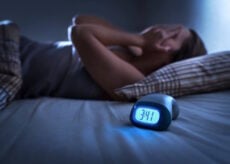Burn 50% More Fat Every Day (meal frequency trick)

Q: How many meals should I eat every day to burn more fat? A friend at the gym was telling me I need to eat at least six times, but it takes so much time to prepare, eat, and clean up from my current three meals a day, especially my biggest meal of the day—dinner. Does it really make that much of a difference?
Thanks for your help in advance.
-Chris
A: Thanks for your question, Chris! This is a good one, and you’re certainly not alone.
In fact, just the other day I was talking with my friend Mike.
Mike is a good guy, but frankly, his diet isn’t so great.
Now, it’s not that Mike eats junk all day. In fact, the foods that make up Mike’s three meals in his daily diet aren’t half bad.
Mike’s problem is something different: his timing is completely backward, and unfortunately, it’s a problem 99% of Americans share.
Take a look at the typical American diet, and here’s what you get:
• Breakfast is the smallest meal of the day, if it’s consumed at all.
• Lunch is a decent, moderate-sized meal.
• Dinner is by far the largest meal of the day, oftentimes consumed late at night.
The problem with this set up? It has you eating your largest meal of the day in the evening hours when your metabolism is at its lowest point.
Essentially, the timing and size of meals in the average diet are the exact opposite of what they should be!
Flip It to Fix It!
To fix this, use what I call the “Mirror Your Metabolism” approach.
You see, your metabolism is highest in the morning. Beyond that, carbohydrate tolerance is also at its peak upon awakening, which simply means your body is more apt to handle a high-carbohydrate intake in the morning hours (carbohydrate tolerance is at its lowest point in the evening).
This means you can get away with a higher carb, higher calorie meal in the morning, with this meal actually stoking your metabolism to burn more calories throughout the day.
Do you want to eat a big breakfast? Go right ahead! It will benefit both your body and metabolism greatly.
On the other hand, dinner should be the smallest (not largest) meal of the day and should also limit carbohydrate intake.
Here’s how to mirror both your metabolism and carbohydrate tolerance for optimal results:
* Breakfast—Large-sized meal, higher carb intake
* Lunch—Moderate-size meal and carb intake
* Dinner—Light-sized meal, lower carb intake
If you’re following the traditional “3-meals-a-day” approach, you won’t find better advice than this “Mirror Your Metabolism” approach. Follow this simple switch, and I guarantee you’ll be able to eat even more total daily calories, while at the same time losing body fat even faster.
Of course, this isn’t the only way to skin the “fat-loss” cat. For example, intermittent fasting (IF) programs call for dinner to be the largest meal of the day and work for other strategic reasons.
So How Many Meals Should You Eat?
This is one of the most common questions, and quite frankly, one of the most pervasive nutrition myths. A number of studies have examined the impact of meal frequency (how many meals you eat)—from 1 to 17 meals—on metabolic rate. Somewhat surprisingly, they’ve found that there’s essentially NO difference between nibbling and gorging.
According to the International Society of Sports Nutrition (ISSN), “The preponderance of the research suggests that increased meal frequency does not play a significant role in decreasing body weight/weight composition.” In other words, increased meal frequency does not appear to be advantageous for fat loss when calories and macronutrients (i.e., protein, carbs, and fat) are the same.
In its position stand on meal frequency, the ISSN concludes, “Increased meal frequency does not appear to significantly enhance diet-induced thermogenesis, total energy expenditure, or resting metabolic rate.” Put simply, increased meal frequency does not “boost” the metabolism.
So, if you eat the right types of food (i.e., food choices) in the right amounts (i.e., portion control), meal frequency becomes a matter of personal preference.
What About Starvation Mode?
While the body does indeed have a host of energy preservation adaptations and mechanisms in place—commonly referred to as “starvation” mode—these decreases in metabolic rate don’t appear to occur until after about 60 hours (of complete fasting), which is a LOT of missed meals! In fact, some research even suggests an INCREASE in metabolic rate with short-term fasting (e.g., 36 hours).
While increased meal frequency does not appear to possess any magical fat-loss benefits, it’s not inherently bad either. Thus, this approach may work well for a small portion of the population, including those folks who have special and/or high-energy needs (e.g., athletes).
However, it’s not a requirement to eat smaller, more frequent meals; in fact, it’s probably counterproductive and inconvenient for most.
Back to Mirroring Metabolism
For the majority of the population, eating 3 – 4 feedings per day is both effective and reasonable (for both short- and long-term applications). Generally speaking, eating every 4 – 5 hours works well for most folks. According to Dr. Mike T. Nelson, this type of meal spacing may be ideal “since this gives the body time to burn a bit of fat between meals (insulin drops a bit, but for it to get really, really low takes up to 24 hours) and appears to ‘reset’ the mechanisms involved in protein synthesis (stuffing proteins into those muscles).”
So don’t stress out too much about how many meals you’re eating or the exact timing. Rather, focus on consistently making the best food choices (i.e., food quality) in the appropriate amounts (i.e., portion sizes) for you and your goals when you do eat, and take the time to listen to your body to find out what works best.
And if you do stick with a three- to four-meals-a-day plan like my friend Mike, because that’s what works best with your personal schedule, then give the Metabolism Mirroring Approach a try. This flip is guaranteed to flip on fat burning.
To your success,
Coach Joel







